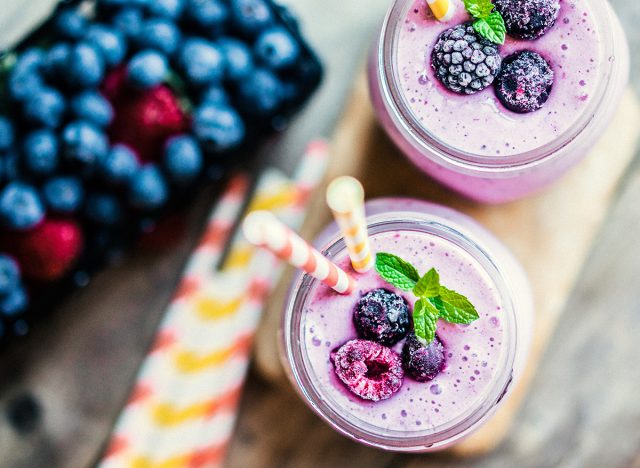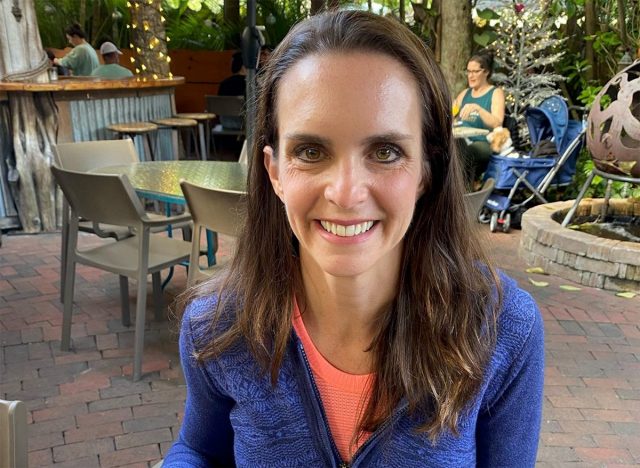4 Things Keeping You From Losing Extra Belly Fat
Are you struggling to lose belly fat – despite dieting and exercising? You might be making some major mistakes, claims one expert. Fitness influencer and online coach Jenna Rizzo helps women get in shape the natural way – via diet and exercise. "If you are doing 1,000,001 different ab exercises and a ton of diets, and no matter what you do, you cannot lose that extra fat around your stomach, this is probably why," she says at the start of the TikTok clip. "Because I've done this so long, I've gotten pretty good at figuring out why somebody's plan's not working for them, and most of the time it comes down to one of three things," she continues. Body Network's Resident RDN, The Diet Diva, Tara Collingwood, MS, RDN, CSSD, LD/N, ACSM-CPT, a Board Certified Sports Dietitian, co-author of the Flat Belly Cookbook for Dummies, also weighs in.
You Think You Are Eating Healthy, But the Food Has "Sneaky" Calories

"Number one, you're eating foods that you think are healthy but have a lot of sneaky calories in them," Rizzo says. "Some examples of this would be smoothies, acai bowls, nuts, granolas, dried fruit cereals, some keto products." She explains that they aren't necessarily "bad" food, "they're just very high in calories, which makes it really easy to overeat them," she says.
We know that when we wanna lose weight, we wanna be eating in a calorie deficit, which means we're eating less than a day than what our body's burning."
You Are Cheating on the Weekends

"Number two, you could be a weekend warrior," she says. "Have you ever been perfectly good on your diet all week and by the time Friday rolls around, you have that glass of wine and you say, I earned this, and the next day you go out to brunch, then dinner, then more alcohol? And I know you could also be thinking, Jenna, I really don't eat that bad over the weekend, but you could be eating just enough to keep you from losing weight."
She used to do this, until she "stuck to a plan for two weekends in a row and lost five pounds," she continues. "That humbled me a lot. And if you're really fighting with the feeling of having to go absolutely crazy every time the weekend rolls around, this is typically a sign that your diet's a little bit too restrictive throughout the week."
You Are Underestimating Calories

"And number three, you're underestimating the amount of calories you're truly eating," says Rizzo. "But eyeballing serving sizes can be really hard. This is why I usually suggest measuring out portion sizes just for the first little bit to pick up on things really fast, and it makes eyeballing stuff a lot easier and way more accurate."
Collingwood Agrees

Collingwood agrees. "I have seen people undo 6 days of eating well with one 'cheat meal' and of course a whole 'cheat day."' It's OK to indulge a little bit but don't go so overboard that you have to spend days making up for it. I would rather you indulge in small amounts of treats more frequently throughout the week so you don't feel a need to go crazy on the weekends," she says.
She also agrees that unless you are reading labels and paying close attention it is easy to eat foods that appear to be "healthy" but are actually quite high in calories, "especially foods that have a lot of sugar like these listed (except for the keto which can be very high in calories because of the high fat content)," she adds. "This is a huge problem for a lot of people. Even dietitians tend to underestimate what they are eating and we are supposed to be the experts! If you need to weigh and measure foods to ensure the right portion for a few days it might help to really understand what 4 ounces of meat or 1/2 cup of rice looks like on your plate."
Related: This Is Exactly How to Lose Body Fat This Year
Also, You Could Be Too Sedentary

"Another thing would be metabolism taking a nose dive because you are sitting too much throughout the day," adds Collingwood. "Even if you are exercising, if you sit all day long you are telling your body to conserve." She recommends getting up every 60 to 90 minutes throughout the day to get some movement to get the metabolism to kick in.
💪🔥Body Booster: If you are struggling to lose weight, take a look at your cheat meals and cheat days – they could be undoing all the progress you are making.
@jennaaaamarieeYou dont need to break your neck trying to do 1000 crunches a day to get a flat stomach. Just make sure you're not doing these things♬ Walking Around – Instrumental Version – Eldar Kedem





